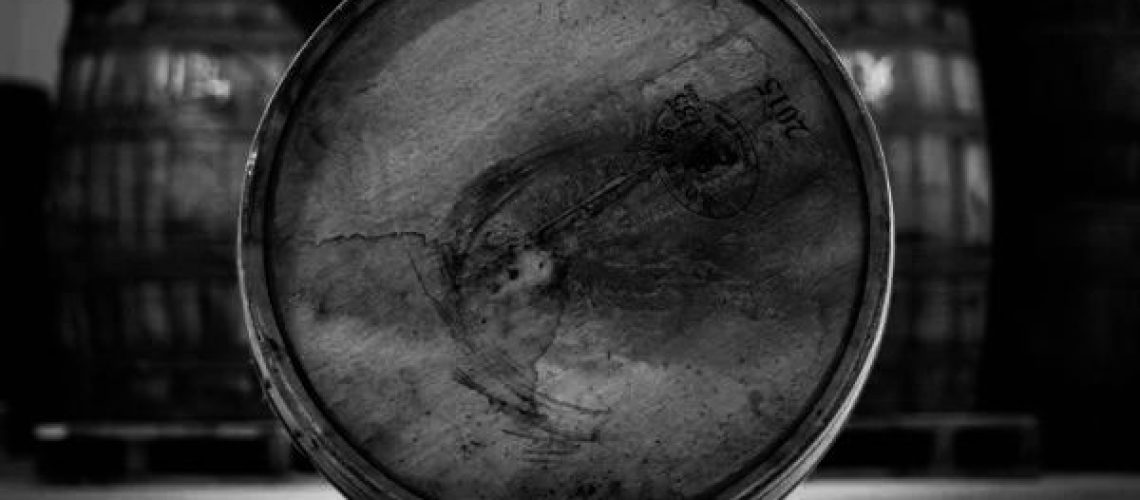Why does scotch, especially good Single Malt scotch, cost much more than bourbon? Before we answer this question, you must realize that there are instances when bourbon can be as expensive as scotch. But let’s see why the statement is true on the average, especially when you compare single malt whisky made in Scotland with bourbon manufactured in the US.
The Price of Ingredients
Scotch is made from barley. That sounds like a simple statement, but it’s not. First, many Scottish distilleries will only use Scottish barley, though it has become a bit more common to import barley from England or elsewhere in Europe. Next, only 10 or so strains of barley (out of about 5,500) are approved for distilling by the Institute of Brewing and Distilling. Scotch manufacturers are always in quest of the perfect barley, one high in starch (low in nitrogen) with good enzyme power (high diastatic power) and the germination ability to create large grains.
A lot of barley is required to make a litre of single malt scotch whisky. Talking of that, the malting process itself adds more cost, maltsters are particular about the type of barley they prefer (for example, they prefer two-row grains to six-row barley due to the former having more starch than protein).
Bourbon is made from corn (the liquor must be a minimum of 51% corn to qualify as “bourbon”), which is, in general, a lot cheaper than barley – dirt cheap, in fact, by comparison. Plus, grain prices in the US are significantly lower than what it costs in Scotland. While some manufacturers may mix in barley or use higher quality corn, the price of the base grain is much cheaper for bourbon compared to single malt scotch.
The Paraphernalia: Stills and Barrels
There are two main sets of equipment to be considered.
Types of stills
There are two types of stills – pot stills, which are used to manufacture liquor batch by batch, and column stills, which can be used for continuous processing. Pot stills are costlier to operate both in terms of time and labour. After every batch is produced, the still must be emptied and recharged. However, what you gain is flavour and mouthfeel. Column stills are much cheaper to operate on the same basis due to continuous processing.
Single malt scotch is made with pot stills, though it’s not uncommon to have blended scotches made with column stills. Bourbon is just the opposite – the legacy and mindset of moonshine still remains. Almost all US bourbon is made in column stills.
Given the above, the price per batch of single malt produced is by definition going to be higher than the price per batch of bourbon. Some US bourbon makers do use pot stills. For example, Kings County Distillery in Brooklyn, NY uses custom-built Forsyth copper pot stills to twice distilled their straight bourbon made from NY corn and UK barley. The end product would be priced higher than the run of the mill bourbon made in the US.
Both types of whiskies are made in copper stills, typically, so there may not be much there. However, the initial cost and upkeep of equipment used to manufacture cheaper varieties of bourbon may be lower than comparable equipment used by single malt scotch manufacturers.
The barrel
Scotch is aged in barrels that are sometimes bought from bourbon makers. There is the old joke about bourbon being the liquid that is used to “age” barrels for manufacturing Scotch. It’s not 100% clear whether the cost of new oak barrels (to make bourbon) is substantially less than the cost of aged sherry wood or bourbon wood, especially given that scotch barrels are re-used while bourbon barrels are typically used only once – by law, a bourbon barrel can be used just once in the US, though new oak barrels that have been charred to make bourbon have a shelf life of nearly 60 years.
On the other hand, aged (usually 2 years or less) bourbon barrels are often resold to scotch, tequila and rum producers. They even have a market as novelty items. So, a part of the cost may be recouped.
On the whole, we can conclude that the pot still process definitely adds cost to the manufacture of single malt scotch compared to column still manufactured bourbon, regardless of whether the cost of the barrel is higher or lower.
The ageing process
The ageing process of single malt scotch adds substantial cost to its price per litre compared to bourbon. US bourbon manufacturers rarely age bourbon for longer than four or five years. In fact, bourbon picks up a sour and/or woody taste if it is aged too long. There are US bourbons that are aged as little as three months, though “straight bourbon” by definition must have been aged at least three years and must indicate on the label if it has been aged for less than four.
The vast majority of single malt scotch, on the other hand, is aged at least 10 years, usually 12. The better quality and higher-priced single malts can be aged much longer. Many brands offer the same whisky aged longer at premium prices (for example, Balvenie commonly sells 12-, 15-, 21- and 30-year old single malt scotch). With more ageing comes more costs. Another element is that whiskey evaporates as it ages, adding more cost per unit to what comes out of the barrel.
The ageing differential adds substantially more cost to single malt scotch whisky, compared to the “churn and burn” style of manufacturing bourbon whiskey.
Weather plays a role
In general, bourbon is produced in substantially warmer climates than the cold, dry Scottish highlands where a lot of single malt scotch is produced. While the coolness allows for scotch whisky to be aged longer without picking up unpleasant flavours, the weather also means more uncertainty in the production of acceptable qualities of barley malts, which in turn leads to price increases in the final product.
Taxes
Taxes, both during manufacturing and then the sales process, are an important factor. The UK Government levies taxes on single malt scotch for every year that the whisky is aged. In addition, sales taxes often tend to be higher in the UK compared to the US, though liquor taxes may vary from jurisdiction to jurisdiction inside the US. Finally, there is also the matter of a substantial import duty – the import of single malt scotch is certainly not considered to be an activity worthy of a subsidy. On the contrary, many countries treat single malt scotch as a luxury item, levying proportionately higher taxes than other imported goods.
Luxury Pricing
The last point also adds to the cost differential between single malt scotch and bourbon. Scotch is considered to be a luxury item and certain types/ages might be a rare commodity. As a result, the market values them more and distributors can charge a higher price. As an example, Macallan 15 Years, which was gaining significant popularity in the US in the early 2000s, absolutely disappeared from the shelves for close to a year around 2006-07. The reason was that the Chinese market had suddenly fallen in love with this particular vintage, and a number of Far Eastern distributors effectively cornered the market, making it a rare commodity. This type of market disequilibrium happens frequently with coveted brands – it’s difficult for distilleries to “step up” production due to the slowness of the manufacturing process.
Large distributors getting involved in the scotch market also leads to the strategic “withdrawal” of certain products from the shelves from time to time. They are then replaced by cheaper alternatives at the same price points. When the original scotch is available again, it has usually gone up in price. Why? Because the market allows it to happen!
While this may occasionally happen with bourbon (in fact, there have been some recent grumblings about bourbon prices climbing), the general view from the consumer standpoint is that bourbon should not cost too much – certainly not as much as good single malt scotch. Given that its usually mass produced in large batches, it’s easy to replenish supplies, which keep prices lower.
In conclusion
Given all the reasons above and the market perceptions of the respective products, it should not be a surprise that the price of single malt scotch is substantially higher than that of US-made bourbon on the average. There are exceptions, but they are few and far between.


